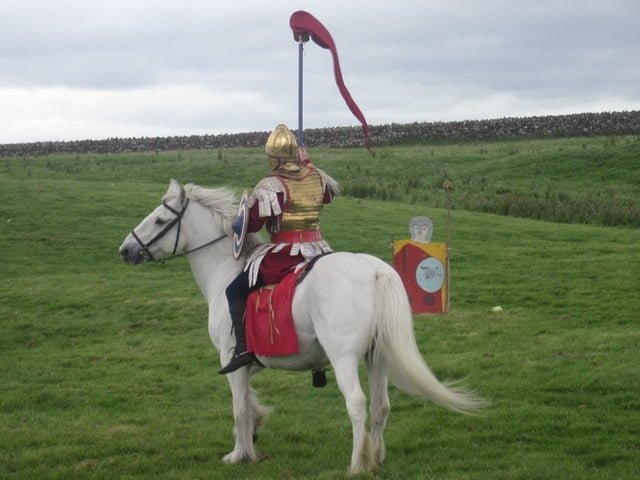12 Beautiful White Horse Breeds (Real and Fake White Selection)

12 Beautiful White Horse Breeds (Real and Fake White Selection)
With their striking appearance, white horses are undoubtedly beautiful creatures. They’re the stuff of fairy tales, and for some people, they can conjure up images of magical stories of princesses, wizards, and unicorns.
White horses are not uncommon, but true white horses are rare. But what’s the difference? And what breeds can be white? In this post, we answer questions like these and more as we bring you a list of 12 white horse breeds.
What does “white” really mean?
Before we talk about the different breeds that can produce white horses, we need to take a step back and consider the question of what “white” actually means when referring to horses.
The answer might seem obvious – after all, a white horse is just a horse in a white coat, isn’t it? Well, no. It’s not that simple.
True white horses are very rare, but horses that appear white – or more or less white – are more common.
Horses that can be properly called white – unlike horses that appear only white – have unpainted pink skin and white hair. They are born this way and do not change color as they age.
However, some white horses may be born with some pigment, which they lose completely as they get older.
Pink skin and white hair result from a lack of pigment cells – called melanocytes – in the skin, which is caused by genetic factors.
This means that we can say that true white horses are genetically white while other horses may show a white or almost white coat without being genetically a true white horse.
So what is not white?
So how can horses that are not genetically white display white coats?
One type of horse with a white appearance is ‘gray’, which is one of the most common types of horse coloration.
Gray horses usually start out as another color, but due to the presence of a certain gene, their coats turn gray with age – and in some individuals, the coat may eventually become completely white.
However, grays can easily be distinguished from true whites – without the need for genetic testing – because they are dark-skinned, not rosy.
Furthermore, if you know that the horse was not white at birth but became white later in life, you can also be sure that it is not a true white.
Another type of coat that can appear white – or at least a cream color – is caused by thinning genes. These are the genes that cause the pigmentation to be less noticeable rather than completely hypopigmented, so horses with reduced genes are not the same as white horses.
In short, some horses may appear white, but that’s just an appearance. Genetically, they are not white horses – even if they look white when you look at them. Although if all you want is a white horse, this distinction may not be very important!
True white horses
Now that we understand the difference between true white horses that are genetically white and horses that only appear white, we can take a look at the different breeds that can produce true white horses.
1. Authentic
The Thoroughbred is one of the most popular racehorse breeds dating back to the 17th and 18th century England . The breed was created when Arabian, Barb and Turkmen stallions were crossed with domestic mares.
They are now a very popular horse found all over the world. Due to its speed, it is mostly used in racing, but it can also be used for other activities such as dressage and showjumping.
The most common colors for this breed are bay, dark bay, chestnut, black or gray, but true white is also possible – although very rare. In purebred breeds, whiteness is caused by a white dominant gene that causes pink skin and white hair all over the body.
2. Arabic
Most white Arabian horses are not true white. Instead, they are gray horses with pale to white coats – but under the white coat, they have darker skin, which indicates they are not genetically white horses.
This makes sense because Arabian horses were bred in the Arabian Peninsula where the sun can be very strong.
This means that horses with thin, pink skin that are prone to sunburn are unlikely to survive, and any genes that cause this will be eliminated through natural selection.
However, at present there are very few white Arabs with pink skin, and it is believed that they belong to a single animal carrying a new type of dominant white gene that arose through a mutation.
Either way, Arabian horses are handsome animals, and white individuals, whether they are true white or simply gray, can look even more impressive.
3. White American
The American White is a colorful breed that is descended from a white stallion that was bred with Morgan mares, producing white offspring. Later, other white horses were introduced to the line.
This breed was originally known as “American Albinism” but due to the absence of albinism in horses, it was later renamed to American Whites.
4. Camarillo
The Camarillo is a true white horse with pink skin and a white coat all over its body. It is a rare and relatively recent breed, having only been created in 1921.
The dynasty can be traced back to a Spanish Mustang called Sultan that was owned by Adolfo Camarillo. This stallion was crossed with Morgan’s mares, which led to the formation of a breed of white horse.
However, by 1991, only 11 of these horses remained, so it was necessary to take measures to save the breed.
The Book of Horses was created, and blood from other breeds was introduced to reduce inbreeding. As a result, the breed survives, but not many people would be lucky enough to see one of these horses in the flesh.
5. American Quarter Horse
The American Quarter Horse is one of the fastest horse breeds. Known for their quarter-mile prowess – hence the name – they are also found at rodeos, horse shows and farm work. It is also a popular choice for all-around riding.
These horses come in a range of colors, sorrel being more common, other colors such as black, bay and brown are also found. True white is also possible, although it is not a common colour, as in other breeds.
In a quarter of American horses, the white is caused by the Sabino 1 gene, which is a specific type of dominant white gene that can occur in many species that produce true whites.
When a horse has only one copy of the sabino 1 gene instead of two copies, it produces a distinctive spotted pattern on the coat rather than causing the entire coat to become white.
6. Horse Walking Tennessee
The Tennessee Walking Horse is known for its unique four-stroke run. It is an elegant animal with a calm demeanor, and these features make it a common sight at horse shows as well as a popular choice for recreational riding.
It comes in most colors, the most common being black, bay, and chestnut as well as several bento colors. However, the breed also possesses the sabino 1 gene, so white Tennessee horses to walk though are rare.
The breed also carries the dilution genes, and dilute coat colors resembling off-white or off-white are more common than true white.
7. Missouri Fox Trotter
The Missouri fox trotter trotter got its name from the distinctive “foxtrot” gait. As you might imagine, it originated in Missouri and is the result of crossbreeding breeds including Arabian horses, Morgans, American saddle horses, Tennessee walking horses and standard breeds.
The terrain of the area in which the breed was established has resulted in a horse that has good foot stability and good stamina, making it popular for activities such as trail riding where such characteristics are desirable.
They are found in all solid colors as well as bento. White examples can be caused by the presence of the Sabino 1 gene, but they are very rare.
8. Mustang
Mustangs are North American Free Horses descended from the horses that the Spaniards brought with them on their transatlantic voyages starting at the end of the fifteenth century. A hundred years old.
Some of these animals escaped and subsequently became populated in the United States, and at present approximately 100,000 of them are believed to live in the wild.
Other runaway horses have also been bred with the Persians, creating a breed with a wide range of characteristics and found in nearly every color – including white, due to the presence of the dominant white genes.
9. Shetland Pony
The Shetland pony, a breed that originated in the Shetland Islands in the UK, carries the Sabino 1 gene and can be born white.
It is a small but strong, strong animal and has a gentle temperament, which makes it a popular choice for younger riders. In the past, they were also used as ponies in coal mines in both the United Kingdom and the United States.
10. Appaloosa
The Appaloosa is an interesting case because this breed can produce animals that are almost entirely white – but without due to the presence of a dominant white gene.
Rather, it is because of the leopard complex that gives more standard trifles to its distinctive spotted pattern.
Appaloosa that exhibit a coat type known as the “few-spot leopard” can appear almost entirely white due to a combination of genetics.
These horses are born white and remain white their entire lives, so they are not like grays that simply fade and turn white with age.
However, since the genetic causes are not the same as other true white horses, it is debatable whether an Appaloosa can be considered a true white horse – although the result is the same, some people may not worry too much about what is responsible!
11. American Paint Horse
American Paint Horses are usually not entirely white, but their distinctive markings are caused by the white hairs on the pink skin, making them at least partially true white.
Although they are known for their patterned coats, these horses are considered a true breed and not a color breed.
12. Azteca
The Azteca is a Mexican horse breed that was created by combining Andalusian, American and Mexican Criollo horse breeds. It is now also found in the United States – the American Aztecs also have American Paint Horse blood in their ancestors.
Although the most common color is gray, all other solid colors are possible – including white, due to the presence of the Sabino 1 gene. However, as with other breeds, true white is rarely true – and gray is more white common.
Real white horse problems
Although they may look amazing, there are also many known health issues that white horses may suffer from.
One of the most common ones is that, due to her rosy skin, she is prone to sunburn and therefore needs protection from the sun.
Another problem in breeding white horses is what is known as “fatal white syndrome”. This comes from the fact that some (though not all) white dominant genes are known to be lethal when they are homozygous.
In other words, if the fetus receives two copies of the dominant white gene, the intestines will not develop properly, and the foal will always survive only two days after birth.
This is also one of the reasons why true white horses are so rare because if they mate with two white horses with “killer white” genes, their offspring would have a 25% chance of dying soon after birth.
Rare but wonderful animals
True white horses are indeed a rare animal, but they do exist – and they can be among the most amazing and beautiful of all horses. However, not all breeds can produce true whites, and even in those that can produce white, coloration does not occur very often.
In this post, we’ve talked about horses that can be considered true white, and if that’s what you want, these are some of the breeds to look at. However, if you only want a white-colored horse, there are other possibilities – such as a white-gray – that look similar as well.



